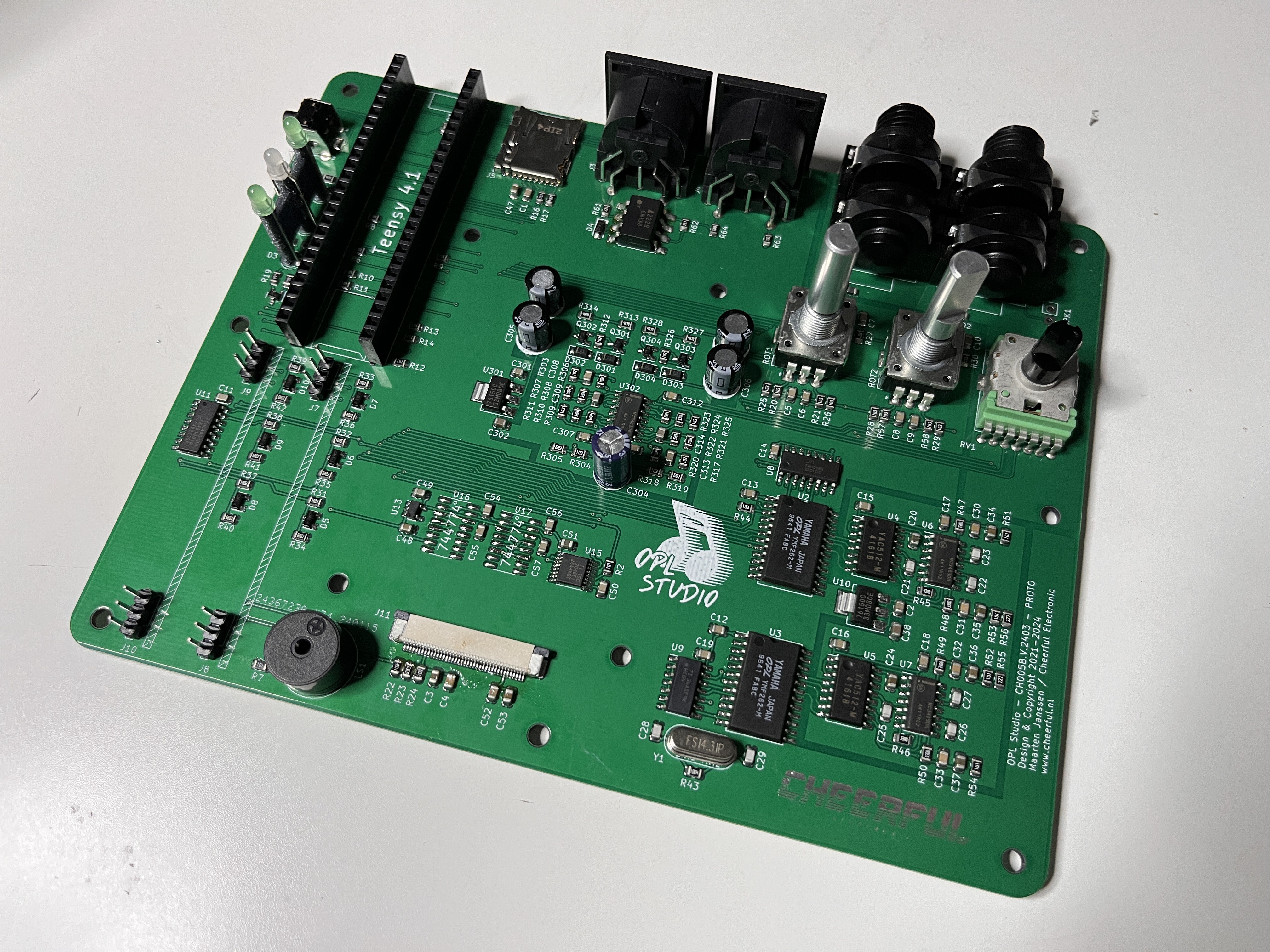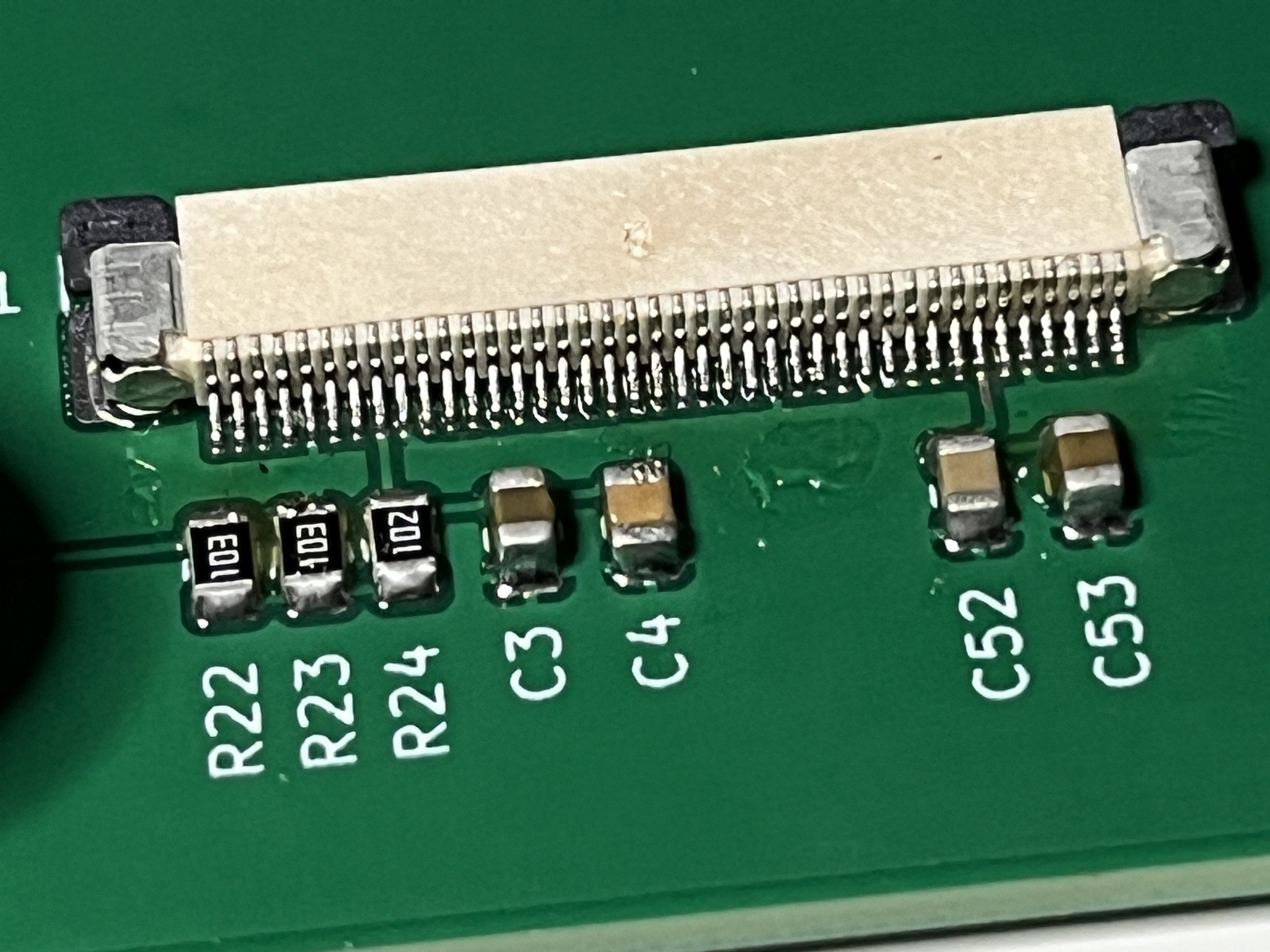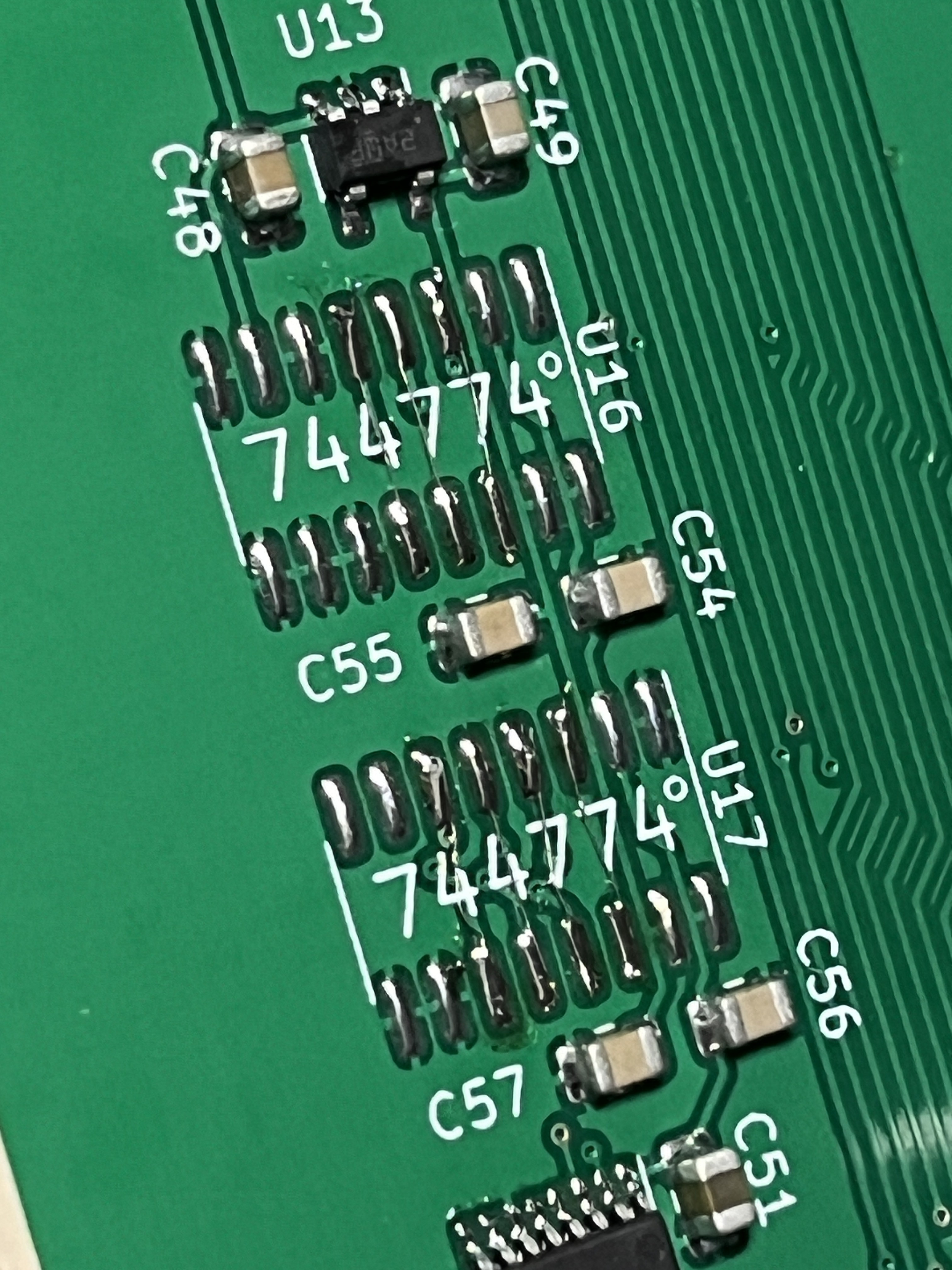All-In-One Prototype
All the parts to assemble the fist new All-In-One prototype have arrived and I have now put together the first board!

The LCD connector was especially difficult and exciting cause of the teeny tiny pins and I wanted to be careful not to melt the plastic while soldering the part with hot air. There were a few bridges that I managed to fix with the soldering iron, some flux and carefully dabbing the excess solder with some desoldering braid. I'm happy with the result and it seems that at least there are no shorts.

Of course I did make some mistakes when I ordered the components... :)
- I ordered mono jack sockets instead of stereo ones
- My BoM had the same Mouser part # for 10nF caps as I had for the 2200pF caps. Oops! I must've copy pasted the parts without updating the reference, so for now 0.1uF will have to do instead of 10nF
- The shaft of the volume pot is too short, though I think this one is on Mouser for getting me the wrong part since I did order one with a 20mm shaft, but no worries for the prototype I'll just 3D print an extension for the shaft
- My biggest mistake is with the two level shifters that I intended to use with the LCD. I must've forgotten to check the footprints, cause these parts aren't available as SOIC-16, what I used on the PCB. I ordered TSSOP-16s without checking and that will not fit! So for now I omitted the level shifters. They are probably not really needed since the breakout boards I was using before also don't have them. I used some tiny single strands of copper wire that I cut from a stripped wire to connect the data lines

I haven't yet tested the board. I need to make some software changes to accomodate the different pinouts on this board. This is what I'll do during the course of this week and hopefully the prototype works as expected!
MIDI Controller Update
While I was waiting for the new PCBs and components I continued working on the MIDI and OPL controllers in the software. The audio part has been completely reworked to allow for exciting new features such as pseudo 4-OP instrument patches, patch effects and MIDI control mapping.
Right now the MIDI control mapping is finished, except for the UI. You can now map any incoming MIDI CC to a synthesizer control. For example map MIDI CC 54 to a software vibrato, software tremolo or patch parameter such as operator output level.
Next up will be to implement support for pseudo 4-OP patches...
 Maarten Janssen
Maarten Janssen
Discussions
Become a Hackaday.io Member
Create an account to leave a comment. Already have an account? Log In.